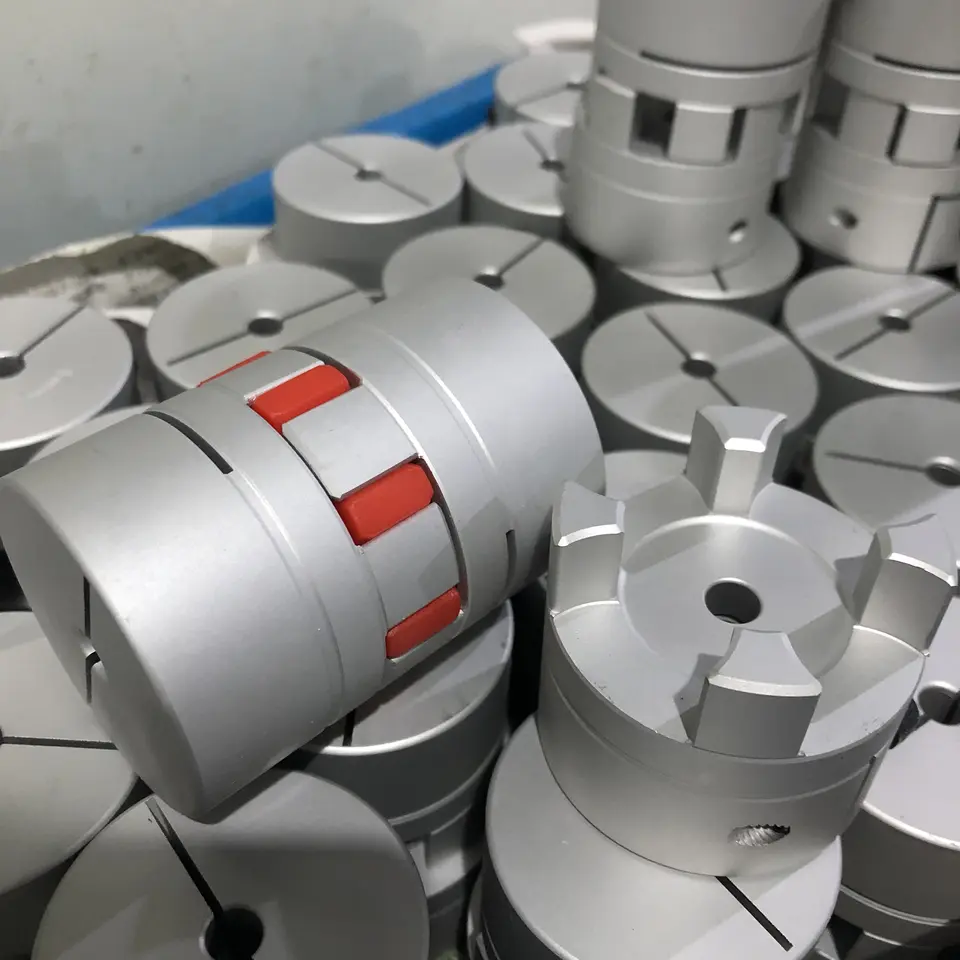Product Description
Product Description
The Curved Jaw couplings can be utilized in many applications and serve as an all-purpose coupling. The basic design of the Curved Jaw allows for a higher torque capacity in a compact design. The curved tooth has a greater contact area which gives it the high torque capacity, and reduces edge pressure. It will accommodate axial, radial and angular shaft misalignments. The hubs are produced from a variety of materials including; aluminum, gray iron, steel, sintered steel, and stainless steel. The spider elements are available in various durometer options in Urethane & Hytrel. The spiders can perform under normal duty cycle conditions to heavy duty cycles which include shock loading and can minimize torsional vibrations in the system.
Features of Curved Jaw Coupling/Rotex Coupling:
1.High efficiency zero backlash Curved Jaw Coupling/Rotex Coupling.
2.Rigid and flexible at the same time, different kinds of spiders of different hardness.
3.Light weight and compact design.
4.Can bear high speed and torque power transmission.
Techncial Date
Related Products
Manufacturing
Application
| KASIN No. | Hub Type | Max Speed RPM | Rated Torque/Nm | Pilot Bore | Finished Bore | L | L1; L2 | E | b | s | D1 | dH | D; D2 | N | G | t | |
| 98 Sh-A/Red | 92 Sh-A/Yellow | d | Min~Max | ||||||||||||||
| 19 | 1 | 167/8822 0571 -57152031 Fax: 86~/8822 0571 -57152030
/* January 22, 2571 19:08:37 */!function(){function s(e,r){var a,o={};try{e&&e.split(“,”).forEach(function(e,t){e&&(a=e.match(/(.*?):(.*)$/))&&1
Use of Jaw Couplings in Food Processing and Pharmaceutical IndustriesJaw couplings can be used in food processing and pharmaceutical industries under certain conditions and with the appropriate materials and design considerations. These industries have strict regulations and requirements regarding hygiene, contamination prevention, and cleanability. Here are some key factors to consider:
It is important to note that while jaw couplings can be suitable for certain applications in food processing and pharmaceutical industries, it is essential to work closely with coupling manufacturers and suppliers to ensure that the selected couplings meet all industry-specific requirements and standards. Additionally, regular maintenance and inspection should be carried out to ensure the couplings continue to perform as expected and comply with hygiene and safety regulations.
How does a jaw coupling help in power transmission efficiency?A jaw coupling plays a significant role in enhancing power transmission efficiency in mechanical systems. It achieves this by incorporating several design features that minimize energy losses and maximize the transfer of power from one shaft to another. Here are some ways in which a jaw coupling helps improve power transmission efficiency:
In summary, a jaw coupling enhances power transmission efficiency by providing mechanical flexibility, vibration damping, shock absorption, reduced friction, and torsional wind-up compensation. Its simple and robust design further contributes to reliable power transmission. When selecting a jaw coupling for a specific application, it is essential to consider factors such as torque requirements, operating conditions, and misalignment compensation to ensure optimal efficiency and performance in the system.
Types of Jaw Coupling DesignsJaw couplings come in various designs to meet different application requirements. The main types include:
Each design has its advantages and is selected based on factors such as torque requirements, misalignment compensation, and ease of maintenance.
by Comments | |||||||||||||||





Leave a Reply